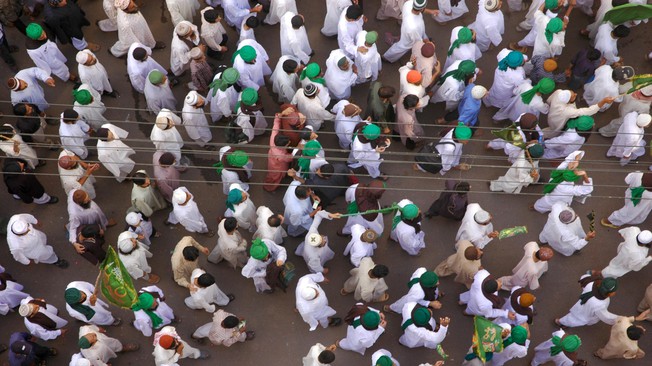Using cellphone data to study the spread of cholera
Published on by Naizam (Nai) Jaffer, Municipal Operations Manager (Water, Wastewater, Stormwater, Roads, & Parks)
 For the first time, EPFL researchers have used mobile phone records to reconstruct the spread of a cholera epidemic.
For the first time, EPFL researchers have used mobile phone records to reconstruct the spread of a cholera epidemic.
While cholera has hardly changed over the past centuries, the tools used to study it have not ceased to evolve. Using mobile phone records of 150,000 users, an EPFL-led study has shown to what extent human mobility patterns contributed to the spread of a cholera epidemic in Senegal in 2005. The researchers’ findings, published in the Proceedings of the National Academy of Sciences , highlight the critical role a mass gathering of millions of pilgrims played in spreading of the disease, and how measures to improve sanitation at transmission hotspots could decrease the progression of future outbreaks.
“There is a lot of hype around using big data from mobile phones to study epidemiology,” says senior author Enrico Bertuzzo, from the Ecohydrology Laboratory at the Ecole polytechnique fédérale de Lausanne. This is largely due to the fact that mobile phone data can be used to reconstruct, with unprecedented detail, mobility fluxes of an entire population. “But I dare say that this is the first time that such data are exploited to their full potential in an epidemiological model.”
Cholera is an infectious disease that occurs primarily in developing countries with poor sanitation infrastructure. It spreads primarily via water that has been contaminated with the bacterium Vibrio cholerae , present in the feces of infected people. Human mobility and waterways both contribute to spreading the disease among human communities, whereas heavy precipitation events increase the chances of the bacteria to contaminate drinking water sources. Researchers at EPFL have developed a mathematical simulation model that accounts for these factors, which they tested on past outbreaks such as the one in Haiti in 2010.
“A lot of local conditions play into whether a minor cholera outbreak will evolve into a major epidemic,” says Flavio Finger, the study’s lead author. “One goal of our research was to develop ways to estimate how the disease spread across populations, both in space and in time,” he says. “Knowing how many cases you are likely to have and where they are likely to be are two important pieces of information that can help dispatch healthcare workers to the right places.”
But until now, human mobility patterns had to be reconstructed from patient case data – a tedious process that, according to Finger, has some major flaws. “This project really began when we were given a chance to work with mobile phone data,” says Finger. The data, provided by Sonatel and the Orange Group, gave the researchers access to the approximate locations of 150,000 customers throughout 2013 as part of their Data for Development Challenge. “Having access to more accurate data on population movement simplified our work and eliminated much of the remaining uncertainty.”
Using the mobile phone data, Finger and his co-authors tested their model by re-running the cholera outbreak that hit Senegal in 2005 on a computer. Its spread had previousy been linked to an annual religious pilgrimage to the city of Touba that brings together millions of pilgrims. “Our simulation did a great job at reproducing the peak of reported cases of cholera in the region around Touba, where the epidemic broke out during the pilgrimage. Without the mobile phone data it would have been impossible to capture this phenomenon, which needs a high density of people to be triggered.” It was also spot-on mapping the spread of the disease across the country as pilgrims traveled home and even replicated certain local events, such as a spike in cholera cases in the country’s capital, Dakar, following intense rainfall there.
“We have also used our simulation to test different intervention strategies, says Finger. “You can use antibiotics or vaccines, or invest in improving sanitary standards. All of these approaches have different impacts and cost different amounts of money and resources. Our simulation gives us a tool to evaluate and compare their efficacy,” he says. They found that improving access to sanitation and providing clean drinking water could have considerably reduced the number of new cases of cholera during the pilgrimage. With less pilgrims disseminating the disease in the country, this would have led to a lower number of new cases later on.
Attached link
https://actu.epfl.ch/news/using-cellphone-data-to-study-the-spread-of-choler/Taxonomy
- Public Health
- Waterborne Pathogens
- Sanitation
- Sanitation & Hygiene
- Epidemics